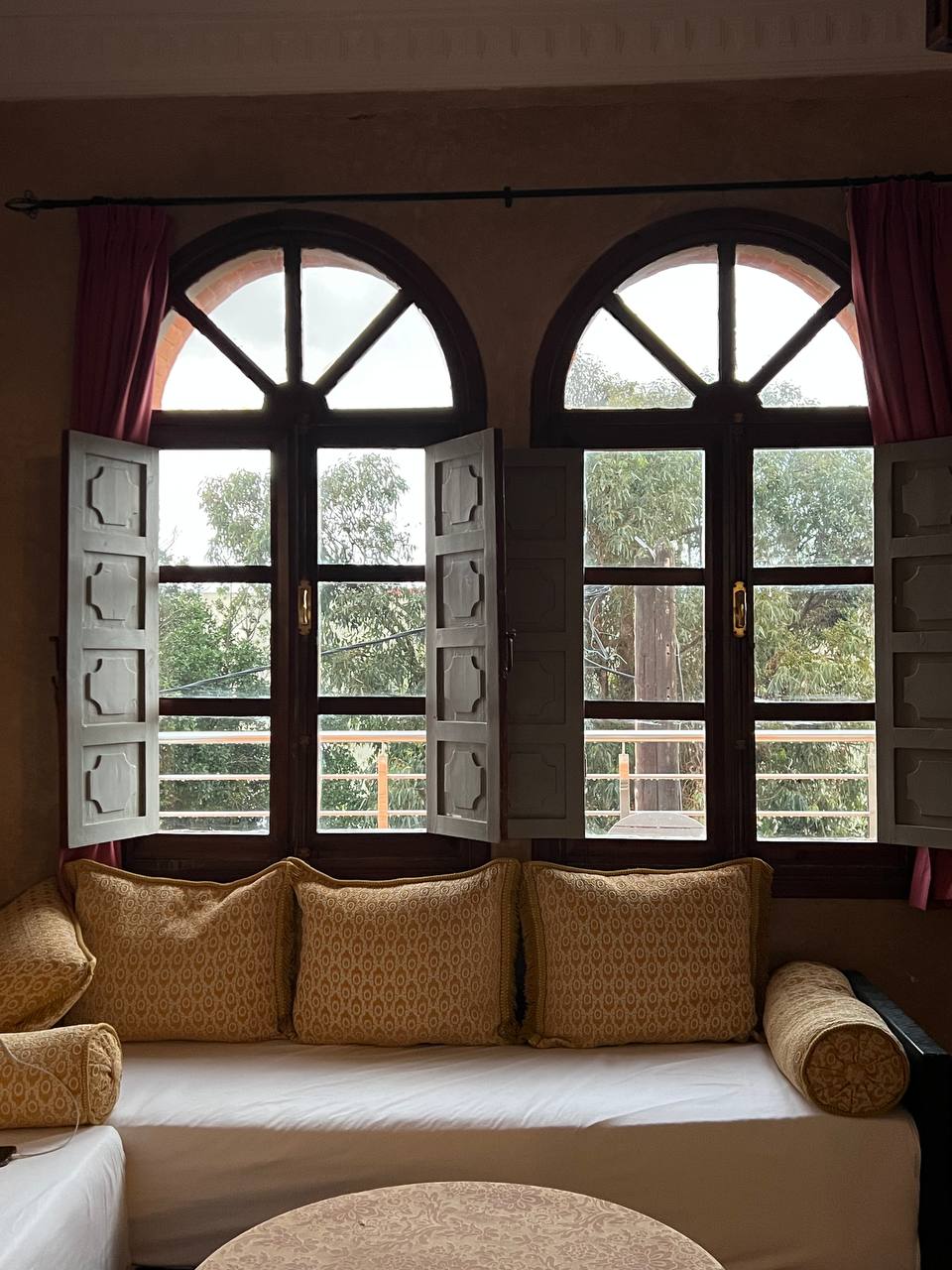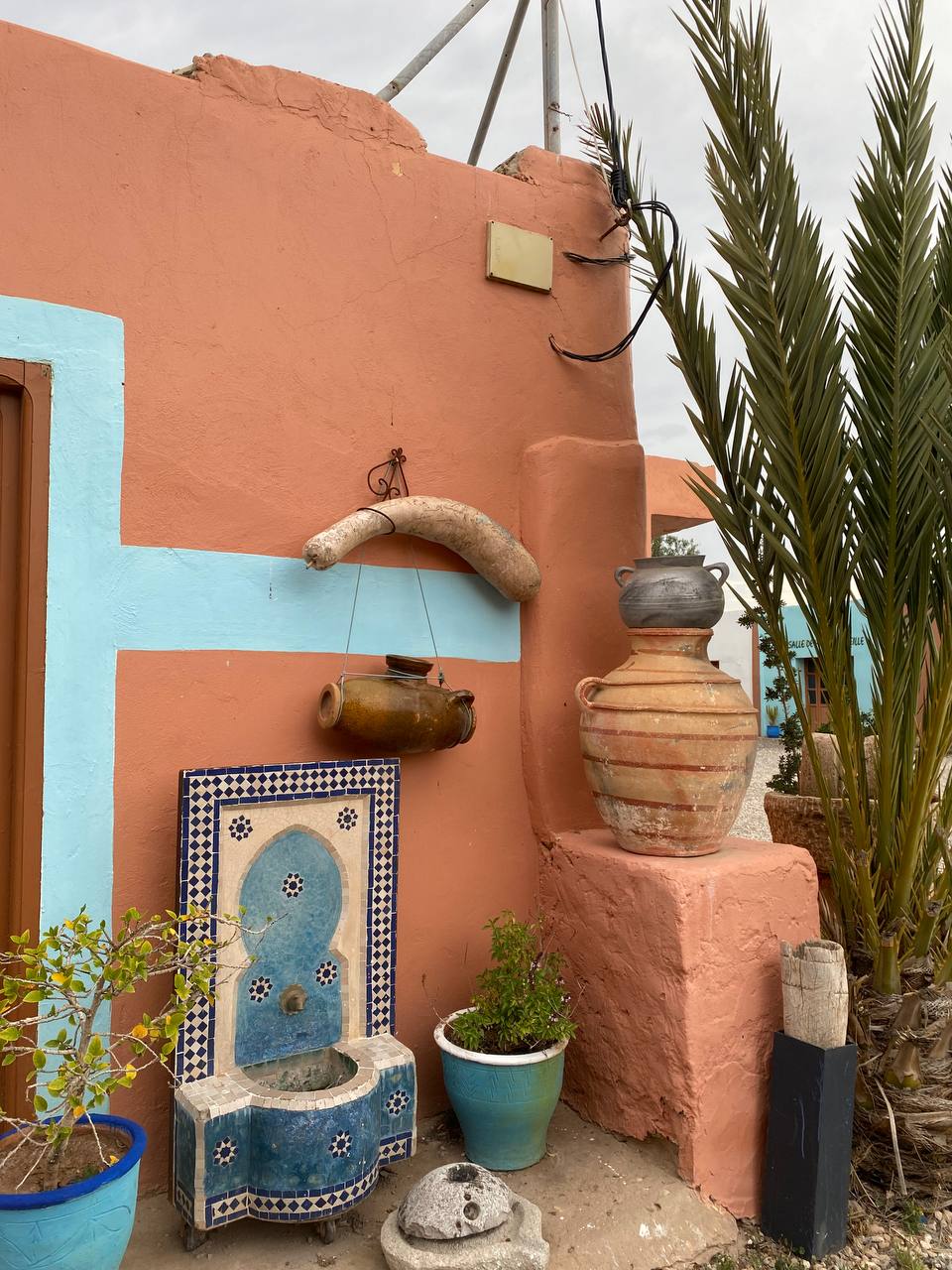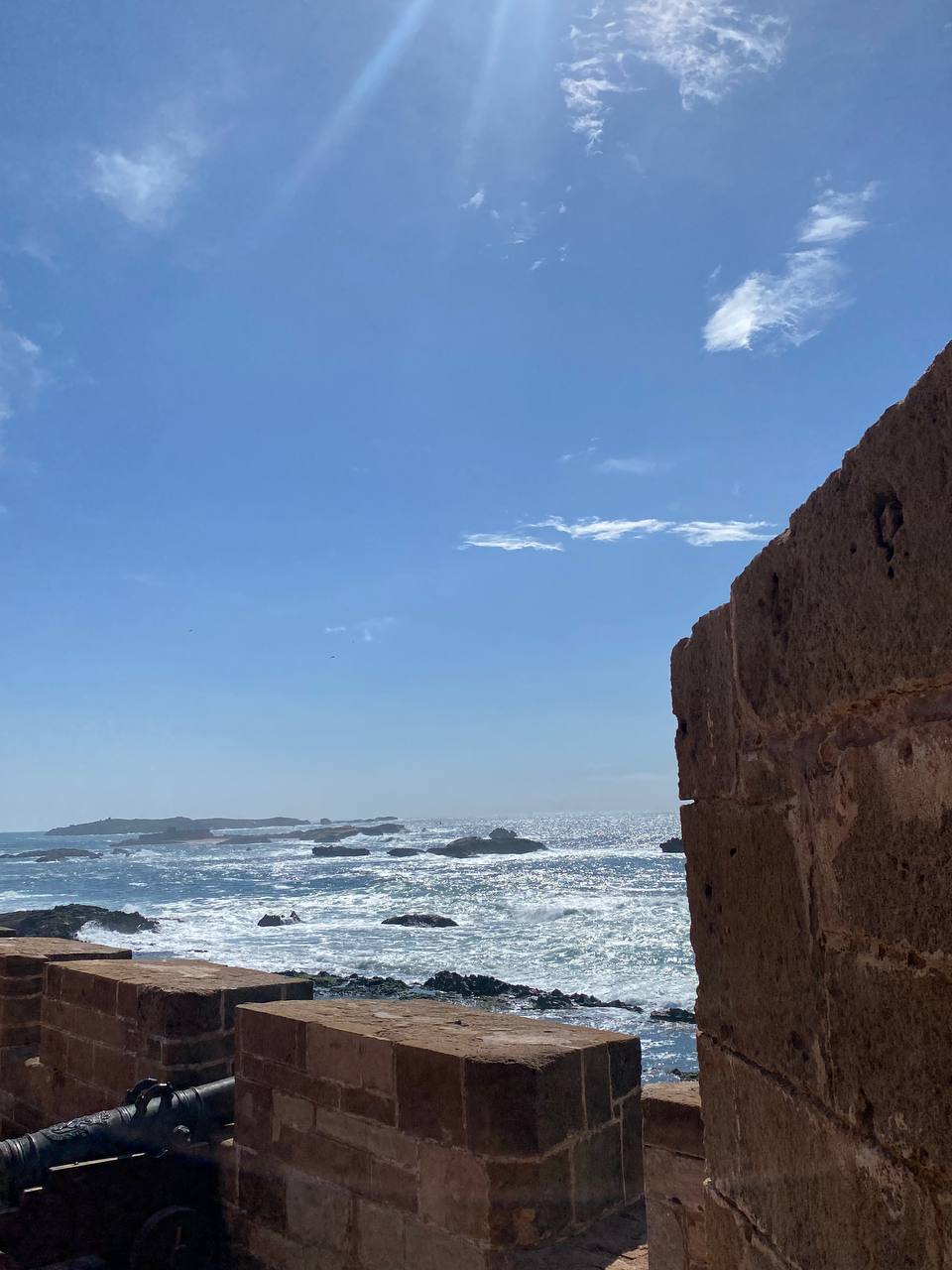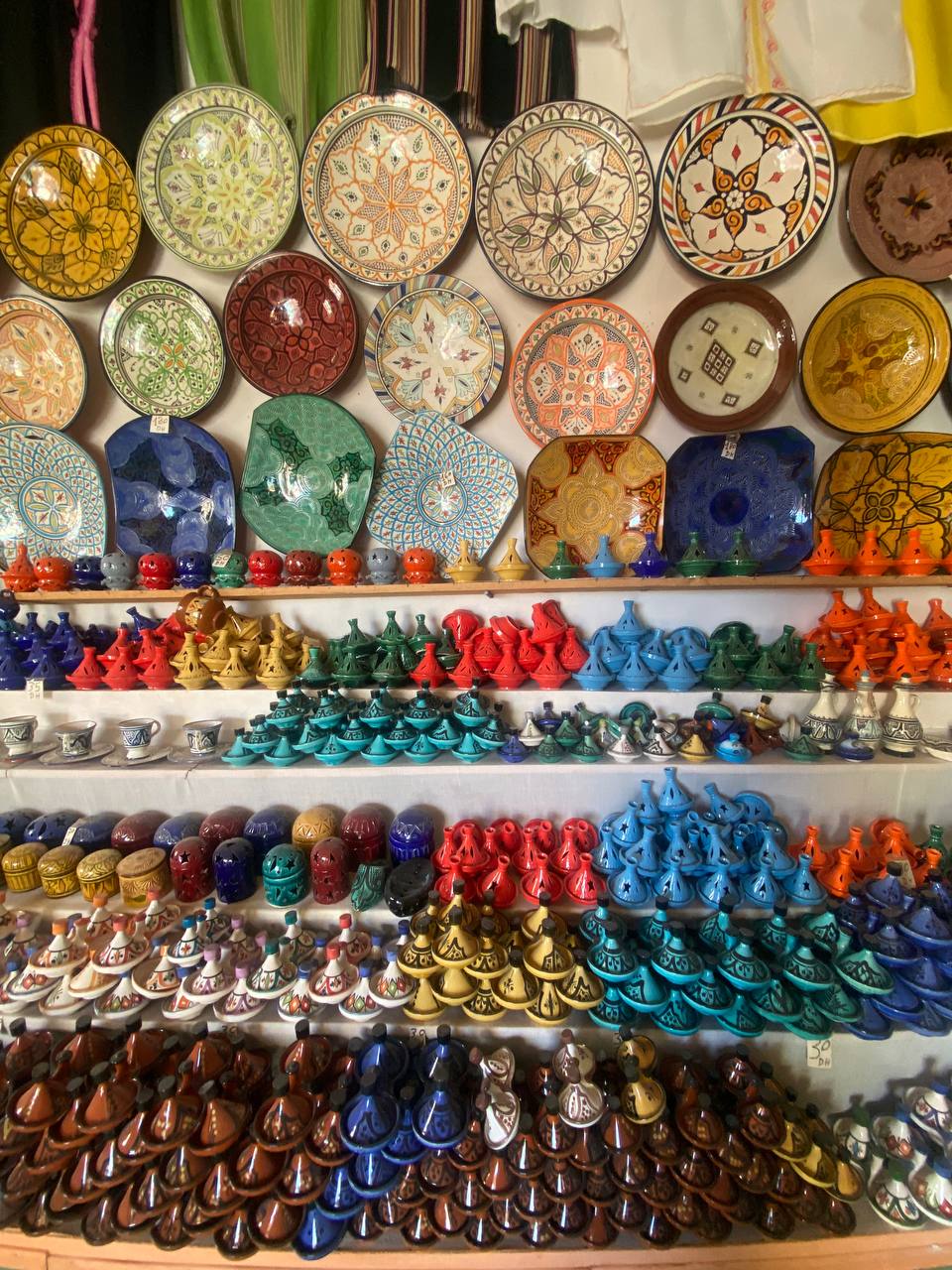Hi everyone! I’m Dinara, an International Hospitality and Tourism Management student at the University of Surrey, and today I’ll be talking about my course field trip to Morocco!
This optional week-long field trip is offered to International Hospitality and Tourism Management and International Tourism Management students, in collaboration with travel agency Explore. While it’s a week of fun with friends, it also serves a purpose: collecting data for our assignments.
Prior to the trip, we had fortnightly lectures to prepare us for our assignments. The first assignment is a group video podcast where we define a question related to Morocco, its tourism, and theories we’ve studied throughout our course or researched independently. Our second assignment is an individual reflective essay about our experience during the field trip.

Day 1: Upon arriving in Marrakech (the capital city), we were introduced to our tour guides, Mohammed and Hassan. We then took a three-hour coach ride to Essaouira, another big city and a popular destination in the country due to its climate and ocean. On the way, I noticed several interesting scenes: donkeys being used as a means of transport, vineyards, olive oil production sites, and red buildings.
Regarding the buildings and their colours, Mohammed informed us that during the French Protectorate in Morocco, a law was established to preserve the architectural heritage, maintaining the original look of the houses, including their colours and details. Interestingly, the colours of cities differ: Marrakesh tends to be more red due to the prevalent stone, whereas Essaouira, for example, is orange. The hotel we checked into reflected this law with its patterns, wood carvings on wardrobes, ceilings, and bed frames.
On the way to Essaouira, we also stopped at an argan oil production site. The facility was a moderately sized building where about 13 women, all widowed, produced oil by hand. There was also a shop selling soaps, oils, shampoos, and more. This initiative contributes to the economic sustainability of the area.
Dinner was a delicious three-course meal at the hotel restaurant.

Day 2: We had breakfast at the hotel and then met with Mohamed for about an hour. He explained the day’s plan and gave us an overview of the history and geography of Essaouira and Morocco in general. We took a lovely walk along the ocean’s coastline to the medina (old town), saw where an episode of Game of Thrones was filmed, and had lunch at a local restaurant. Since Essaouira is by the ocean, we had a lot of fish dishes during our stay, including our lunch that day.
After lunch, we visited a marketing with various types of fish, some of which I’d never seen before. We then toured a hotel where we had the opportunity to ask questions for our assignments. While some people returned to the hotel afterward, my friends and I went back to the medina and enjoyed some ice cream on a rooftop with a view of the entire area. Dinner was also in town.


Day 3: We drove for about an hour and a half to another hotel. This hotel was a tranquil retreat; it doesn’t do any advertising and relies solely on word of mouth, which works perfectly for them. Everything is made from natural materials, mainly stone and wood. It has a view of the ocean and is surrounded by tonnes of greenery.
We had another opportunity to ask questions, including those related to our assignments. After the visit, we returned to town. Some people took optional surfing lessons which they’d signed up to advance, while others, like me, went back to the medina to wander around the market and buy souvenirs.


Day 4: We drove to Ait Ben Haddou, a famous yet more niche location known for its stunning views and unique village architecture. The downside was climbing all the stairs, but the views and the small souvenir shops along the way made it worthwhile.

Day 5: One of the trip highlights was the desert!
We ‘sheshed up’ (referring to the shesh, a headscarf word by Bedouins), before driving to the desert. When we arrived, we had lunch, took some time to complete our field diaries for our assignment, and got to ride the camels, which was quite scary at first but I soon got the hang of it.
It was then time for some thé à la menthe (mint tea) and dinner: couscous with beef, bone broth, and roasted vegetables. For dessert, we had oranges with cinnamon, a common Moroccan treat we encountered several times.
After dinner, Mohammed gave us an introduction to the Sahara and the life of the Sahrawi people (those living in the desert). Following that, we enjoyed a performance with African drums and Sahrawi songs and danced in a circle to their music. Some people then went to sleep (in tents – which had actual beds!), while others, including me, chose to sleep under the stars. It was fun until my friend and I woke up at 3am because of the cold.

Day 6: We had breakfast and took the camels back. We then drove to High Atlas Mountains, where we walked for about 30 minutes to the riad (guest house). There, we enjoyed the usual mint tea followed by dinner. After dinner, some of us went to the terrace with a view of the mountains and stars. It was incredible for the first seven minutes until it became unbearably cold. By now, you can probably tell that it’s not always +30°C in Morocco year-round.

Day 7: Another day, another location. This time we drove to Marrakech. It felt quite interesting to be there after spending time in deserts and mountains with little to no people, let alone tourists.
After lunch, we met another tour guide who took us to Bahai Palace, a riad museum. We then walked through the medina and along the souks until we reached our minibuses that took us to the hotel.
Later, we returned to the place where we had lunch and listened to a presentation from Explora, with opportunities to ask questions. For dinner, we tried another traditional Moroccan dish called pastilla – a layered crunchy pastry with meat, cinnamon, and powdered sugar on top. I didn’t think I’d like this combination, but I did! Afterward, we had free time to wander around the medina.

